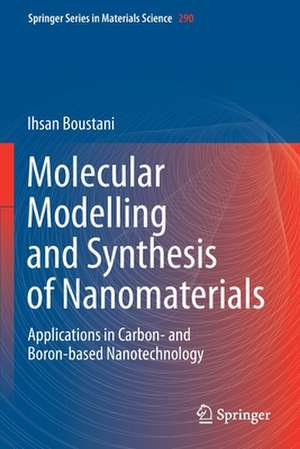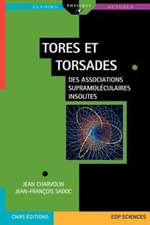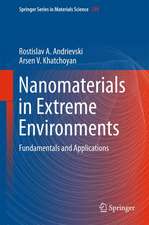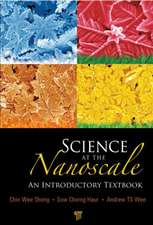Molecular Modelling and Synthesis of Nanomaterials: Applications in Carbon- and Boron-based Nanotechnology: Springer Series in Materials Science, cartea 290
Autor Ihsan Boustanien Limba Engleză Paperback – 15 iul 2021
| Toate formatele și edițiile | Preț | Express |
|---|---|---|
| Paperback (1) | 959.36 lei 6-8 săpt. | |
| Springer International Publishing – 15 iul 2021 | 959.36 lei 6-8 săpt. | |
| Hardback (1) | 965.64 lei 6-8 săpt. | |
| Springer International Publishing – 15 iul 2020 | 965.64 lei 6-8 săpt. |
Din seria Springer Series in Materials Science
- 18%
 Preț: 1820.22 lei
Preț: 1820.22 lei - 18%
 Preț: 776.09 lei
Preț: 776.09 lei - 24%
 Preț: 689.69 lei
Preț: 689.69 lei - 18%
 Preț: 968.96 lei
Preț: 968.96 lei - 20%
 Preț: 568.95 lei
Preț: 568.95 lei - 18%
 Preț: 953.65 lei
Preț: 953.65 lei - 18%
 Preț: 902.36 lei
Preț: 902.36 lei - 18%
 Preț: 953.65 lei
Preț: 953.65 lei - 20%
 Preț: 948.42 lei
Preț: 948.42 lei - 18%
 Preț: 1143.07 lei
Preț: 1143.07 lei - 18%
 Preț: 1111.53 lei
Preț: 1111.53 lei - 18%
 Preț: 1103.62 lei
Preț: 1103.62 lei - 18%
 Preț: 1225.94 lei
Preț: 1225.94 lei -
 Preț: 473.91 lei
Preț: 473.91 lei - 18%
 Preț: 782.42 lei
Preț: 782.42 lei -
 Preț: 433.47 lei
Preț: 433.47 lei - 18%
 Preț: 1116.40 lei
Preț: 1116.40 lei - 18%
 Preț: 946.24 lei
Preț: 946.24 lei - 18%
 Preț: 945.20 lei
Preț: 945.20 lei - 18%
 Preț: 1114.21 lei
Preț: 1114.21 lei - 15%
 Preț: 641.20 lei
Preț: 641.20 lei - 18%
 Preț: 958.56 lei
Preț: 958.56 lei - 18%
 Preț: 1224.36 lei
Preț: 1224.36 lei - 15%
 Preț: 644.82 lei
Preț: 644.82 lei - 24%
 Preț: 833.45 lei
Preț: 833.45 lei - 24%
 Preț: 1060.36 lei
Preț: 1060.36 lei - 18%
 Preț: 964.10 lei
Preț: 964.10 lei - 18%
 Preț: 1224.36 lei
Preț: 1224.36 lei - 18%
 Preț: 1221.20 lei
Preț: 1221.20 lei - 18%
 Preț: 946.87 lei
Preț: 946.87 lei - 18%
 Preț: 1836.92 lei
Preț: 1836.92 lei - 15%
 Preț: 643.34 lei
Preț: 643.34 lei - 18%
 Preț: 1246.32 lei
Preț: 1246.32 lei - 18%
 Preț: 956.81 lei
Preț: 956.81 lei - 18%
 Preț: 953.52 lei
Preț: 953.52 lei - 15%
 Preț: 637.59 lei
Preț: 637.59 lei
Preț: 959.36 lei
Preț vechi: 1169.95 lei
-18% Nou
Puncte Express: 1439
Preț estimativ în valută:
183.63€ • 199.53$ • 154.35£
183.63€ • 199.53$ • 154.35£
Carte tipărită la comandă
Livrare economică 21 aprilie-05 mai
Preluare comenzi: 021 569.72.76
Specificații
ISBN-13: 9783030327286
ISBN-10: 3030327280
Ilustrații: XIII, 594 p. 538 illus., 392 illus. in color.
Dimensiuni: 155 x 235 mm
Greutate: 0.84 kg
Ediția:1st ed. 2020
Editura: Springer International Publishing
Colecția Springer
Seria Springer Series in Materials Science
Locul publicării:Cham, Switzerland
ISBN-10: 3030327280
Ilustrații: XIII, 594 p. 538 illus., 392 illus. in color.
Dimensiuni: 155 x 235 mm
Greutate: 0.84 kg
Ediția:1st ed. 2020
Editura: Springer International Publishing
Colecția Springer
Seria Springer Series in Materials Science
Locul publicării:Cham, Switzerland
Cuprins
Foreword.- Preface.- Part I Molecular Modelling & Magic Clusters.- 1 Molecular Modelling.- 2 Magic Numbers & Clusters.- 3 Alkali Metal Clusters.- Part II The p-Block Non-Metal Clusters.- 4 The Element Boron.- 5 The Element Carbon.- Part III Modelling of Nanostructures.- 6 Two-Dimensional Sheets.- 7 One-Dimensional Nanotubes.- 8 Three-Dimensional Fullerenes.- Part IV Potential Application in Nanotechnology.- 9 Nano Battery.- 10 Nanosensors and Fullerenes.- 11 Semi-Emperical Methods.- Index.
Textul de pe ultima copertă
This book presents nanomaterials as predicted by computational modelling and numerical simulation tools, and confirmed by modern experimental techniques. It begins by summarizing basic theoretical methods, then giving both a theoretical and experimental treatment of how alkali metal clusters develop into nanostructures, as influenced by the cluster's "magic number" of atoms. The book continues with a discussion of atomic clusters and nanostructures, focusing primarily on boron and carbon, exploring, in detail, the one-, two-, and three-dimensional structures of boron and carbon, and describing their myriad potential applications in nanotechnology, from nanocoating and nanosensing to nanobatteries with high borophene capacity. The broad discussion of computational modelling as well as the specific applications to boron and carbon, make this book an essential reference resource for materials scientists in this field of research.
Caracteristici
Explores the interplay between theoretical prediction and experimental discovery Rich in useful figures and references Discusses the historical evolution of the role of theory in materials science
















